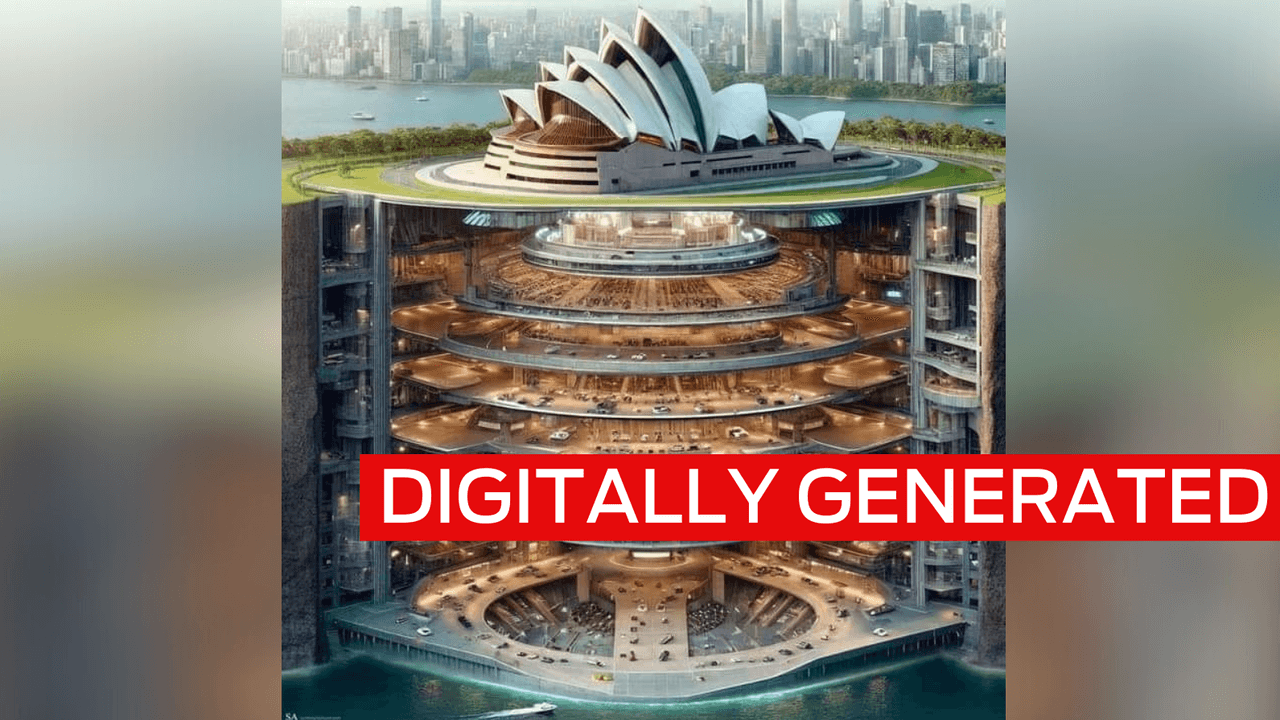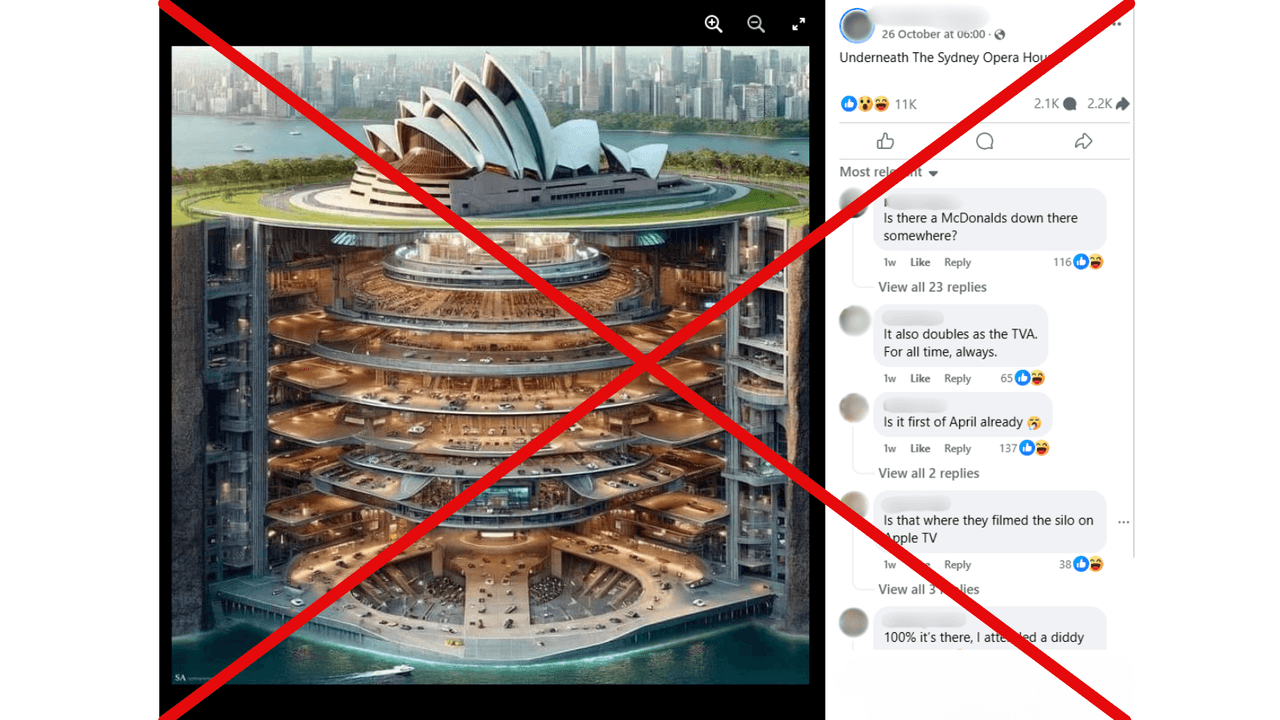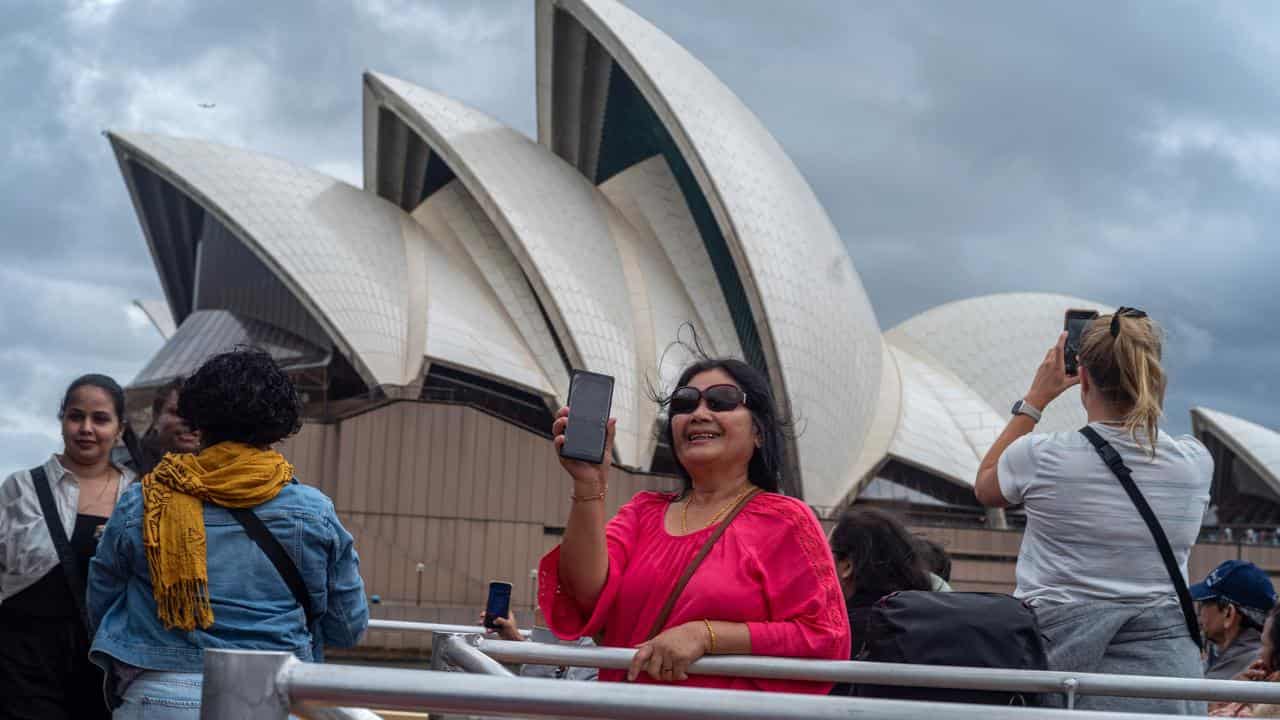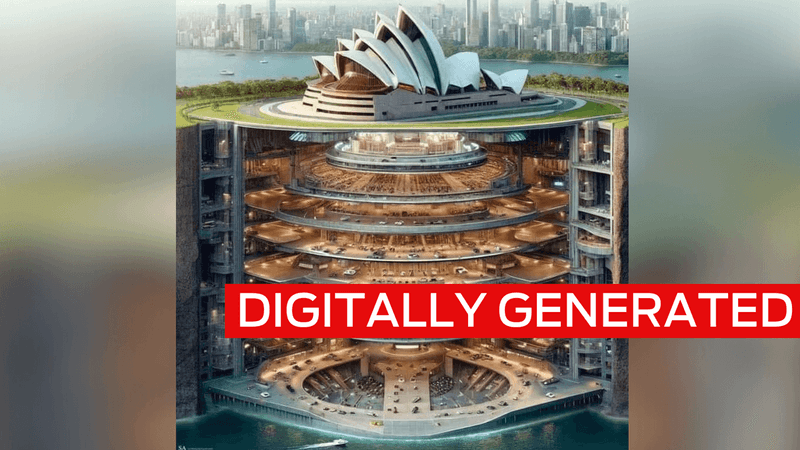
What was claimed
The Sydney Opera House is sitting on top of a huge subterranean structure.
Our verdict
There's no underground structure below the Opera House and an image claiming to show this appears to be AI-generated.
AAP FACTCHECK – A viral picture of the Sydney Opera House showing a sprawling subterranean complex extending deep beneath is a digitally generated fake.
Facebook users have been sharing the image, with captions such as: “Underneath the Sydney Opera House.”
The image is clearly fake, with plenty of commenters poking satirical fun, but many non-Aussies do seem to be falling for it, with comments such as “Awesome venue, Every floor entertaining” or “Isn’t it amazing? This is one visit I’d love to make”.

A spokesperson for the Sydney Opera House confirmed the image is fake, and there’s overwhelming documentary evidence that no such structure exists.
The picture depicts the iconic structure on top of a futuristic multi-level circular complex featuring shops and other facilities extending far below the surface. One post has had more than seven million views.
“I can confirm this depiction of the Opera House is false and doesn’t resemble reality,” a media spokesperson for the Sydney Opera House told AAP FactCheck.
The shared image appears on a Facebook page dedicated to “synthography art” – a term that refers to images created via artificial intelligence – and the logo “SA” appears at the bottom left of the Opera House image.
The page has shared many other improbable images.

Anyone who has visited the Opera House will immediately recognise the post as fictitious.
In reality, the easily recognised landmark is not on a round base with trees surrounding it, as depicted, but the narrow Bennelong Point peninsula.
The skyline behind also doesn’t match Sydney’s.

The image also shows the sea apparently at split levels, with the harbour level with the Opera House at the top, but water at the base of the deep structure.
There were many challenges in building the Opera House, and constructing a subterranean space several times bigger than the structure itself would have been almost impossible.
Bennelong Point, known in Indigenous history as Tubowgule, was the site of the colonial era Fort Macquarie, built between 1817 and 1821.
The fort was torn down in 1901 and replaced with a tram depot, which closed in 1955 and was demolished in 1958 to make way for the Opera House, construction of which began in 1959.
Michael Moy’s book Sydney Opera House: Ideas To Icon traces the history of the building and site.
Moy describes “unforeseen problems” when the peninsula was “found to be less stable than it appeared”, with much of it made of rubble and water that “intruded into the lower levels of what would become the foundations” (page 38).

The Opera House website reports that the base “was made of loose alluvial deposits permeated with seawater and completely unsuitable for bearing the weight of the intended structure” and required much extra work.
GML Heritage’s recent archaeological excavations beneath the Opera House found remains of the fort and even material from Indigenous shell middens.
According to Moy, the highest shell on the Opera House is 54.6 metres above the podium the site sits on (p92).
Extrapolating from that, the Opera House structure in the Facebook image would extend far below sea level, but according to NSW government nautical charts, at its deepest there the harbour is only about 40m.
A rather unusually designed parking garage beneath the Royal Botanic Garden, near the Opera House, opened in 1993.
The garage does have a unique twisting structure, but nothing like the James Bond villain-style lair depicted in the fake image.
Tourists hoping to check out the wonders of Sydney Opera House’s vast underground complex would be advised to bring a wetsuit and shovel – in real life, the most impressive sights at the Opera House are well above ground level.
The Verdict
False – The claim is inaccurate
AAP FactCheck is an accredited member of the International Fact-Checking Network. To keep up with our latest fact checks, follow us on Facebook, Twitter and Instagram.









